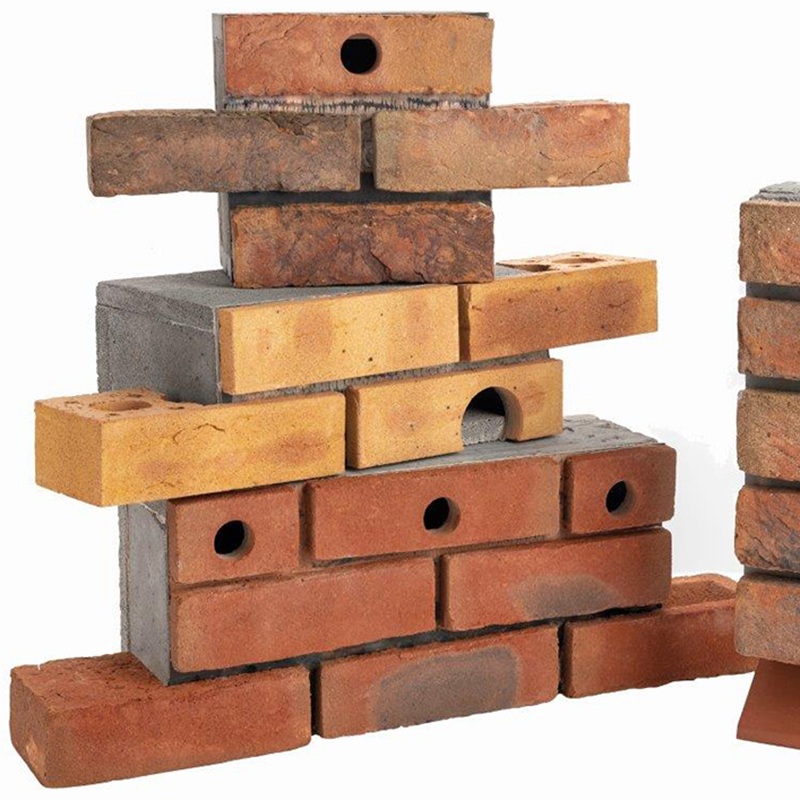Wienerberger UK and Ireland’s latest report explores the role of Eco-habitats in driving Biodiversity Net Gain across construction projects.
In association with![]()
A new report prepared by environmental specialists at Wienerberger, titled ‘The Changing Shape of Biodiversity in the Built Environment’, addresses the challenges faced by the construction industry as it seeks to meet enhanced Biodiversity Net Gain requirements.
Why is it important?
The 2019 State of Nature Report shows that urban areas in the UK now hold more species than the countryside, due largely to the provision of essential components for biodiversity. But wildlife is in a state of decline across the UK, with 41 per cent of species declining in numbers since 1970.
Bats have fallen dramatically in numbers over the last 50 years with the common pipistrelle declining by almost 70 per cent. House sparrows have declined by around 50 per cent in the same period and are now red listed as a species of high conservation concern. The number of swifts fell by 53 per cent between 1995 and 2016, and starlings by 66 per cent since the mid-1970s – also red listed as a bird of high conservation concern.
What can architects do?
Homebuyers and commercial property tenants are more aware of both the environment and their own wellbeing, so buildings that support local wildlife to create better outdoor spaces are becoming more attractive to buyers and users.
By planning for nature, architects can support developers and building users to reconnect with it. But this relies on making informed data-driven decisions on projects which are shaped by early communication and collaboration.
The most important point to make is that these measures no longer need to be costly or complex. Architects now have access to a wide range of solutions to help achieve the necessary ecological enhancements and ensure Biodiversity Net Gain. These will often work together to contribute to the net gain required. For example, Eco-habitats provide a fuss-free and inexpensive option, which can be introduced as supplementary enhancements to provide durable and discreet.
What are Eco-habitats?
The premise is simple. Initially driven by architect-led demand for more discreet solutions, integrated wildlife boxes provide durable and discreet habitats for birds, bats, bees and other species. Ready to be integrated into the fabric of a building as it is constructed or renovated, they are produced to UK standard brick and roof tile dimensions for ease of installation.
Wienerberger’s range, in partnership with Habibat, is produced in the UK and can be faced in any brick type or stone (regardless of manufacturer), stone finish or render. Roofing Eco-habitats are also available. All solutions can be made bespoke to suit individual project needs.
Bird boxes are tailored to individual species, such as swifts, starlings and sparrows, providing space for nesting and roosting, which is safe from predators. They are usually constructed using insulating concrete block which provides an internal roost space, with access holes to suit different species, before being clad with a brick face to match the building fabric.
Bat boxes are also solid boxes made of insulating concrete that provide an internal roost space and are clad appropriately. Suitable for most species commonly found in the UK, the single chambered unit features an integrated V system to increase the surface area for bats to roost against, while also allowing for freedom of movement.
Other Eco-habitats include solitary bee bricks, produced to UK brick size format so they can be easily installed in place of a standard brick. These feature holes of varying sizes to provide resting space for different species of solitary bee. Solitary bees lay their eggs in these cavities before sealing the entrance with mud and chewed-up vegetation. The offspring then emerge in the Spring and the cycle repeats.
What else do you need to know?
Biodiversity is no longer a ‘nice to do’ in new developments. Recent changes in planning frameworks mean Biodiversity Net Gain is now a critical requirement for securing planning consent for new developments. There is currently no quantitative value assigned to Eco-habitats through Natural England’s Biodiversity Metric 3.0, but wider benefits must also be considered, including the provision of Eco-habitats.
That is why project teams are increasingly turning to these proactive and thoughtfully designed solutions for creating spaces for wildlife rather than simply replacing them.
Contact Details
Download Wienerberger’s specialist report, ‘The Changing Shape of Biodiversity in the Built Environment – Exploring the role of Eco-habitats in the drive for Biodiversity Net Gain’, for free by clicking here.
Source: Architecture Today







